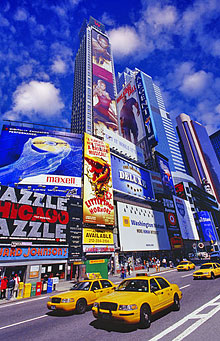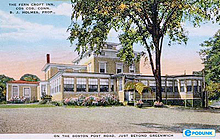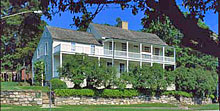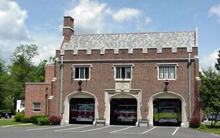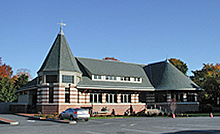Local Attractions
New York
If you are interested in tours, please let me know what you would like to do. There are so many possibilities: TV tapings, museums, exhibits at the Fashion Institute, Broadway shows, FAO Schwarz, fabric shopping, the Met—the list goes on and on! We won't be able to cover everything, and I understand some of you would prefer to sightsee on your own, but those who want to participate will be in for a fun filled time!
One of the best things about our November date is the beginning of the holiday season—some of the Christmas decorations will be in store windows. For those who want to explore on their own, I found New York to be much easier to navigate than expected! It was my first time in New York, and I took trains, subway, buses, cabs, and walked alot—all by myself—and navigated just fine!
 |
In addition, our very own Major Elaine has compiled the "Gene Lovers Guide to NYC and Environs;" click here to check it out.
For more information on all there is to see and do in Manhattan, visit NYC & Company: New York City's Official Tourism Website.
Cos Cob area
Cos Cob's name derives from Algonquian for "high rock." Located on the Mianus River, the community's one-time role as a commercial shipping port disappeared with the damming of the river.
From 1890 until about 1920, Cos Cob was the site of a lively art colony. There, John Henry Twachtman, Theodore Robinson, Childe Hassam, and J. Alden Weir participated in shaping American Impressionism. Cos Cob in the 1890s was as important to them as Argenteuil in the 1870s had been to Monet, Renoir, and Manet. It was their testing-ground for new styles, new themes, and new media.
The Cos Cob art colony's focal point was the Holley family's boardinghouse (ca. 1730) , a rambling old saltbox overlooking the small harbor. (Now known as the Bush-Holley House, it is a National Historic Landmark with a museum operated by the Historical Society of the Town of Greenwich.) The diversity of the group that gathered at the Holley House contributed to the art colony's experimental atmosphere. Painters exchanged ideas with writers including novelist Willa Cather, muckraking journalist Lincoln Steffens and political commentators, essayists, and humorists. The art students who attended Twachtman's summer classes provided a steady infusion of youthful energy. One of them, the Japanese artist Genjiro Yeto, was a personal link to the culture the Impressionists of Cos Cob deeply admired.
On the national level, several members of the art colony, notably Elmer Livingston MacRae and Henry Fitch Taylor, were among the principal organizers of the Armory Show, the landmark exhibition that, in 1913, introduced European modernism to a vast American audience. Twachtman and Robinson had died by then, but they were among the five Americans presented as precursors of modernism. Twachtman's Hemlock Pool (ca. 1900), which was exhibited at the Armory Show, is one of the highlights of The Cos Cob Art Colony.
For a community profile of Cos Cob, click here; for more information about where to go and what to see in and around Stamford, visit the Coastal Fairfield County Convention & Visitor Bureau or Connecticut Tourism online.

